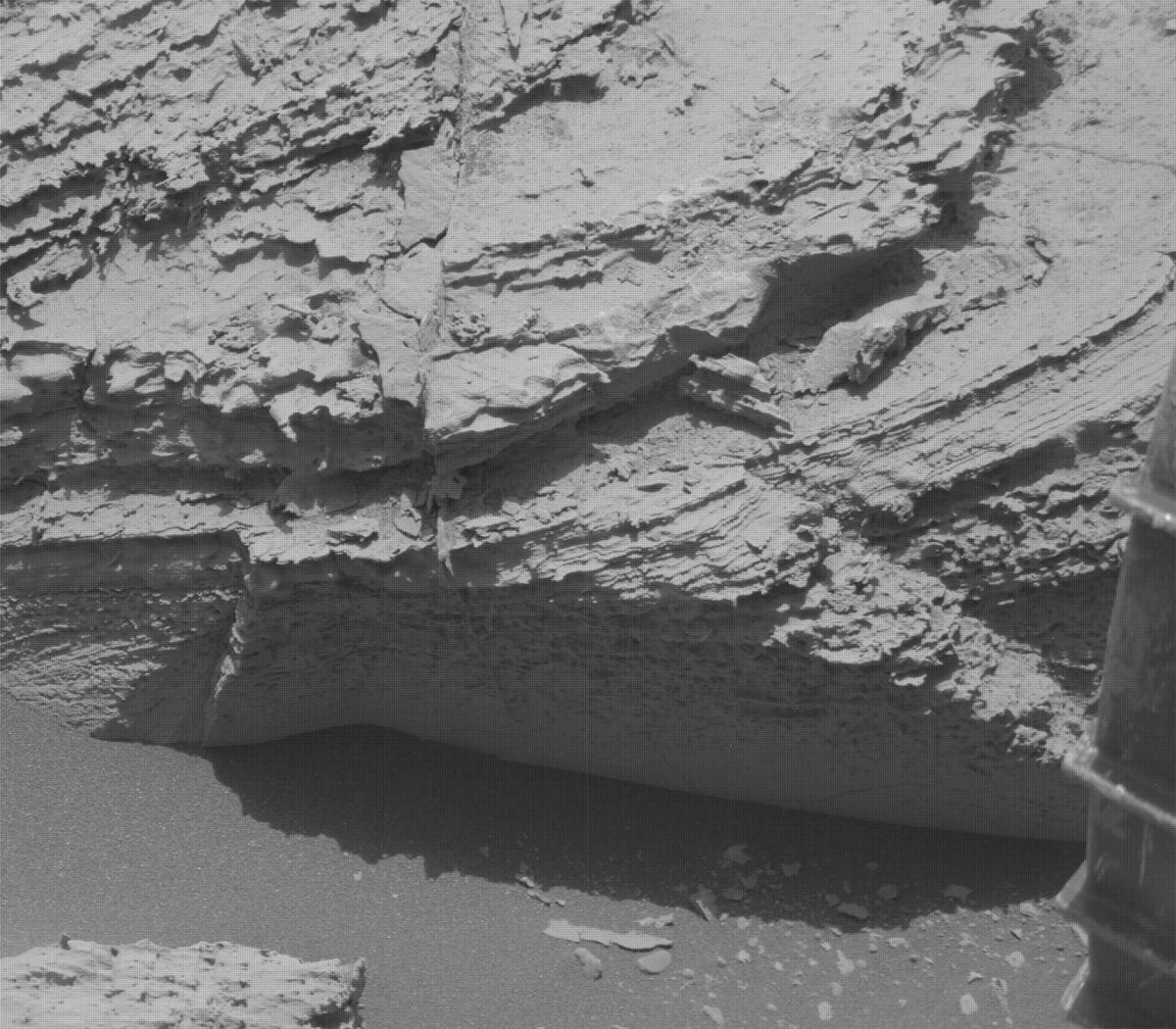4 min read

Earth planning date: Wednesday, November 29, 2023
Mars has just emerged from its solar conjunction period, when sending commands to all Mars spacecraft was not safe for three weeks since the Red Planet was behind the Sun as seen from Earth. During that time, Curiosity followed a long plan of instructions covering Sols 4004-4022 which were uploaded to the rover during the week of October 30. The early word on is that the rover weathered the long blackout period just fine. Still parked at the Sequoia 2 drill site, the rover performed atmospheric imaging with its engineering cameras and took argon measurements with APXS during conjunction. Data is still trickling in from the conjunction period. While Mars was on the far side of the Sun, Curiosity had been relaying its science and engineering data to satellites in orbit around Mars. However, while Mars was still close to the Sun last weekend, some of the data reaching Earth from those relay satellites was "spotty," or missing some packets of information, due to radio interference from the Sun. For image data, this looks like gaps in the images. As Mars moves away from the Sun, we will get retransmissions of the data and fill in the gaps.
For the next two sols, Curiosity will do more observations of the ground and sky near the Sequoia drill site. Many atmospheric observations have been planned, including an afternoon Navcam phase function sky survey, Navcam cloud altitude movie on the afternoon and early morning, and a Navcam dust devil survey, suprahorizon images, and measurements of atmospheric dust opacity by Navcam and Mastcam on the afternoon of Sol 4024. Mastcam will be expanding its photography of the workspace near the rover with a 19x3 mosaic. There will also be another set of diagnostics performed on the Mastcam filter wheel. Mastcam will be returning to both the Sequoia drill hole and the "Aspendell" target on each sol to look for changes over time. APXS will join in the change detection observations as with a proximity mode "hover" over the Sequoia drill hole. ChemCam will be looking at new targets this plan. The long distance RMI camera will look back at the stratigraphic transition between the upper and lower levels of the Gedis Vallis Ridge. ChemCam will turn its laser to a target named for the "Cobra Turret" in Kings Canyon National Park. The "Cobra Turret" 5x1 observation samples a bedrock face riddled with dark colored nodules. Its namesake is a peak with vertical rock walls on the South wall of Tehipite Valley along the Middle Fork Kings River. Like the earlier "Fang Turret" ChemCam target from sol 3991, "Cobra Turret" is a feature of "Gorge of Despair." Mastcam will take also an image of "Cobra Turret" to document the ChemCam observation. A ChemCam 10x1 passive observation will be taken of the “Brittle Bush” target, an area of bedrock broken by the rover as it rolled by. The "Brittle Bush" target is the notch and broken piece of rock shown in the upper right of the attached Mastcam image from Sol 4001. Brittlebush is one of the most common and lovely plant species that make up the sagebrush biome covering the Owens Valley near Bishop, CA. All geologic targets in this area of Mount Sharp have been designated names from the Bishop geologic quadrangle.
Wednesday’s plan will complete Drill Sol 6 with the "RAGE" procedure to remove remaining material from the drill. Going forward, Curiosity will finish up the campaign with Drill Sol 7 on Friday and do targeted science over the weekend. We expect to finally drive away from Sequoia on Monday. Hopefully, we will have caught up with the downlink of all conjunction data by the time Curiosity moves on in its journey.
Written by Deborah Padgett , OPGS Task Lead at NASA's Jet Propulsion Laboratory







